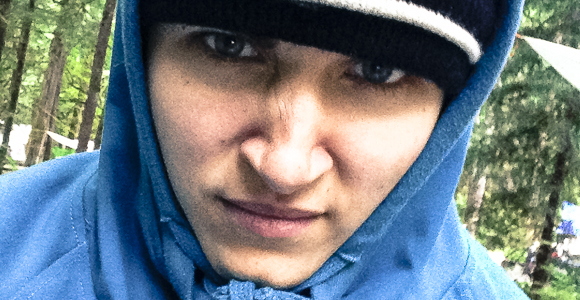“If I am deeply connected with what I am feeling, there is a greater likelihood that I will be present, and when I am present, there is a greater chance that compassion will arise.” – Judith Lasater
When you think of a yogi, what images and characteristics come to mind?
I think of someone sitting in meditation. I think of a light and peaceful person – with kind loving words for everyone. I don’t tend to think of a person so angry that she is ready to hulk-smash the next person who cuts in front of her in traffic.
Anger doesn’t fit with the image most of us have of a yogi, so it can often feel like yogis don’t – or shouldn’t – get angry. While the idea of not getting angry is lovely (and perhaps, desirable to some), anyone actively practicing yoga is a human being, and anger is a normal human emotion. We all get angry – even the yogis.
Unfortunately, in some spiritual communities, people feel like they need to ignore, supress or deny their anger. The message that anger is not appropriate or okay, whether overt or subtle, can lead to a lot of confusion. Most spiritual teachings also ask us to be present with what is, but sometimes “what is” is a lot of anger.
So, what is a rage-filled yogi to do?
Acknowledge Anger
There is a saying in the yoga world that eloquently highlights the importance of acknowledgement: “What you resist will persist.” Unacknowledged feelings and experiences have power because the things we push away have a way of running our life. We can’t deal with something that we aren’t willing to look at. Anger will not dissipate when it is ignored or denied.
The first step in acknowledging anger is simply to admit to yourself, “I feel angry right now.” A second step may be to notice how anger plays out in your body. Physical reactions may include an increased heart rate and the tightening of muscles, and you may notice the increased energy that accompanies the release of adrenaline.
Question Anger
Anger is referred to as a secondary emotion because it is usually a response to feeling hurt or scared. Anger can be a reaction to a perceived threat to ourselves, our self-image, some part of our identity, our loved ones, or our property. The cognitive experience of anger impacts how we perceive and think about what is making us angry, and it is normal to focus on how what happened to us is wrong, unfair, and undeserved.
You can challenge your experience and perception of anger with questions like these ones:
- Why am I really feeling angry?
- What should have happened?
- Did I feel something before this anger?
- What do I want from this anger?
By better understanding what is motivating you, you empower yourself to have more control over your behaviour. Unacknowledged and unexplored emotions will persist in influencing your behaviour whether you want them to or not.
Re-Frame Anger
Anger is often associated with a reactive expression of outward aggression, which is unfortunate because reactive aggression is only one way to express the emotion. In looking at anger, it is important to separate the feeling from the reaction. What we feel and how we act are two distinct things. The feeling is where the certainty lies – we all get angry – but there is an incredible amount of space around the reaction. If we are able to look at anger (acknowledge) and get curious about it (question), we have already begun the process of creating space around what it means to be angry (re-frame).
Empower Anger
In creating space around how we react to anger, anger becomes a possible force for good in the world. Anger can motivate us to stand up for ourselves and correct injustices, and the practice of yoga asks us to be in the world and to take care of the world – not to stand idly by.
Well-known yoga teacher Judith Lasater asserts that anger is a response to thoughts about what should have been. She uses the example that we might feel frustrated about arriving late because of heavy traffic, and suggest that a simple interpretation of our frustration is that there shouldn’t have been traffic.
In the case of heavy traffic, your questioning might lead you to the realization that you were worried about disappointing someone by being late or that you were scared of the consequences of being late – not that there shouldn’t have been traffic.
But sometimes it is appropriate to believe that things should have been different. For example, I believe that a government should protect the food supply of its citizens – not the profits of suppliers.
This should be different.
Our desire for quick and convenient things has created a disposable culture that is creating an unmanageable amount of waste.
This should be different.
Animals are raised in cruel and abhorrent conditions so that we can kill enough to allow us to eat meat whenever we want.
This should be different.
Don’t fail to see that hugging a tree is also standing in front of it. Anger is an intense human emotion that we should learn to work with. Reactive aggression isn’t the answer, but neither is denial. In being able to identify and acknowledge our own anger, we can start to use its energy in intentional and powerful ways. Anger gives us the fuel to fight against the things that we think should be different.
Yoga and other spiritual practices should not endeavor to erase or eliminate anger; rather, they should teach us how to hold the intensity of the emotion and develop our ability to respond intentionally.
Namaste,
Sarah


